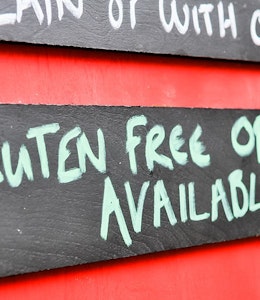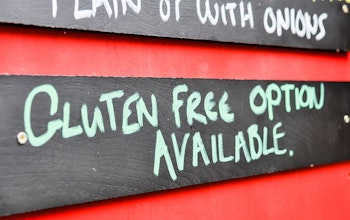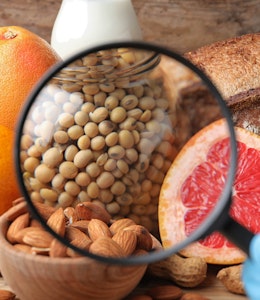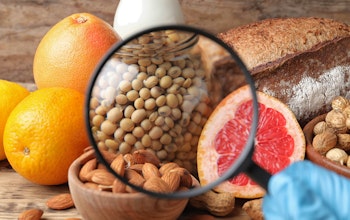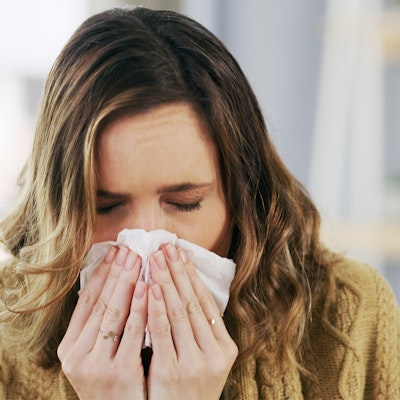Allergen Deep Dive: Milk
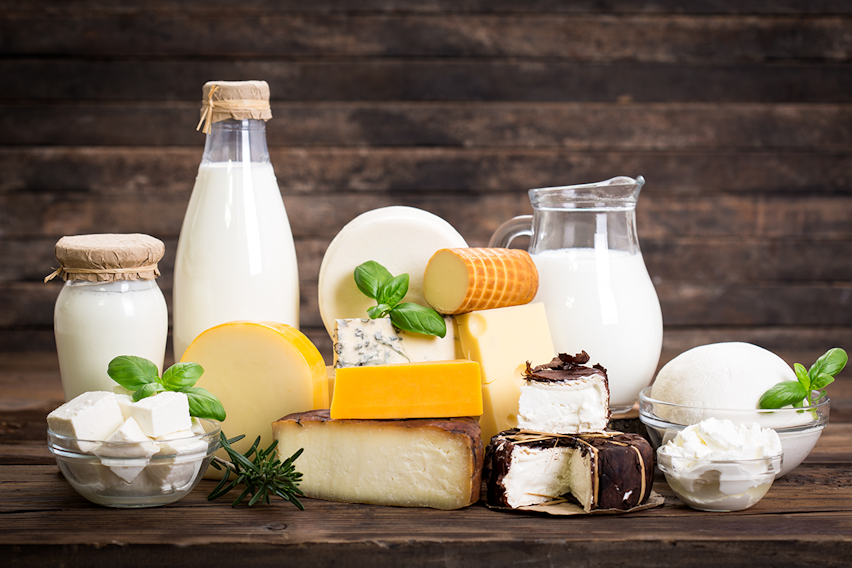
A milk allergy is also sometimes referred to as ‘Cow's Milk Protein Allergy’ or CMPA, and should not be confused with ‘Lactose intolerance’. It is a relatively common allergy, especially in babies, and usually manifests before they turn one. Read on to find everything you need to know about a milk allergy, including how it differs from Lactose intolerance and the foods you need to avoid for both...
What is a milk allergy?
A milk allergy is a body’s immune system responding negatively - or even fatally - to milk, or a product containing milk. A milk allergy usually refers to cow’s milk, but people can be allergic to sheep, goat, buffalo milk too.
An allergy occurs when a person’s body misidentifies a harmless substance as being dangerous, and triggers a reaction from the immune system. These reactions can vary, and include anything from uncomfortable itching to life-threatening anaphylaxis.
Allergic reactions from milk are caused by one or more of the proteins in it - these proteins can be found in two parts of the milk:
- Curd - this is what causes milk to curdle and solidify in chunks when it goes sour, and contains caseins, proteins that slowly release amino acids into the body.
- Whey - the watery part left in milk after it has curdled and hone sour.
People who suffer from a milk allergy can be allergic to either or both of these milk parts.
What is cross-reactivity?
People with an allergy to cow milk are often allergic or sensitive to milk from other mammals such as sheep, buffalo and goats, and should be wary about consuming these milks. This is because of something called ‘cross-reactivity’, which means the proteins in one type of food being similar to those in another and the body’s immune system recognising them as the same.
What is a milk intolerance?
An intolerance is the body’s non-immune reaction (sometimes delayed) to a particular substance - often food. It very often affects the digestive system and can share some symptoms with an allergic reaction. Often when people think they have a milk intolerance, what they really have is a lactose intolerance. Lactose is the sugar found in milk.
Is lactose intolerance a milk allergy?
A lactose intolerance is not a milk allergy. An allergy affects a body's immune system and intolerance does not. An allergy can trigger anaphylaxis and an intolerance will not. People who have a milk or dairy allergy are allergic to some of the proteins found in milk, either from the curd, the whey or both. People with lactose intolerance do not have enough of lactase - the enzyme needed to break down lactose.
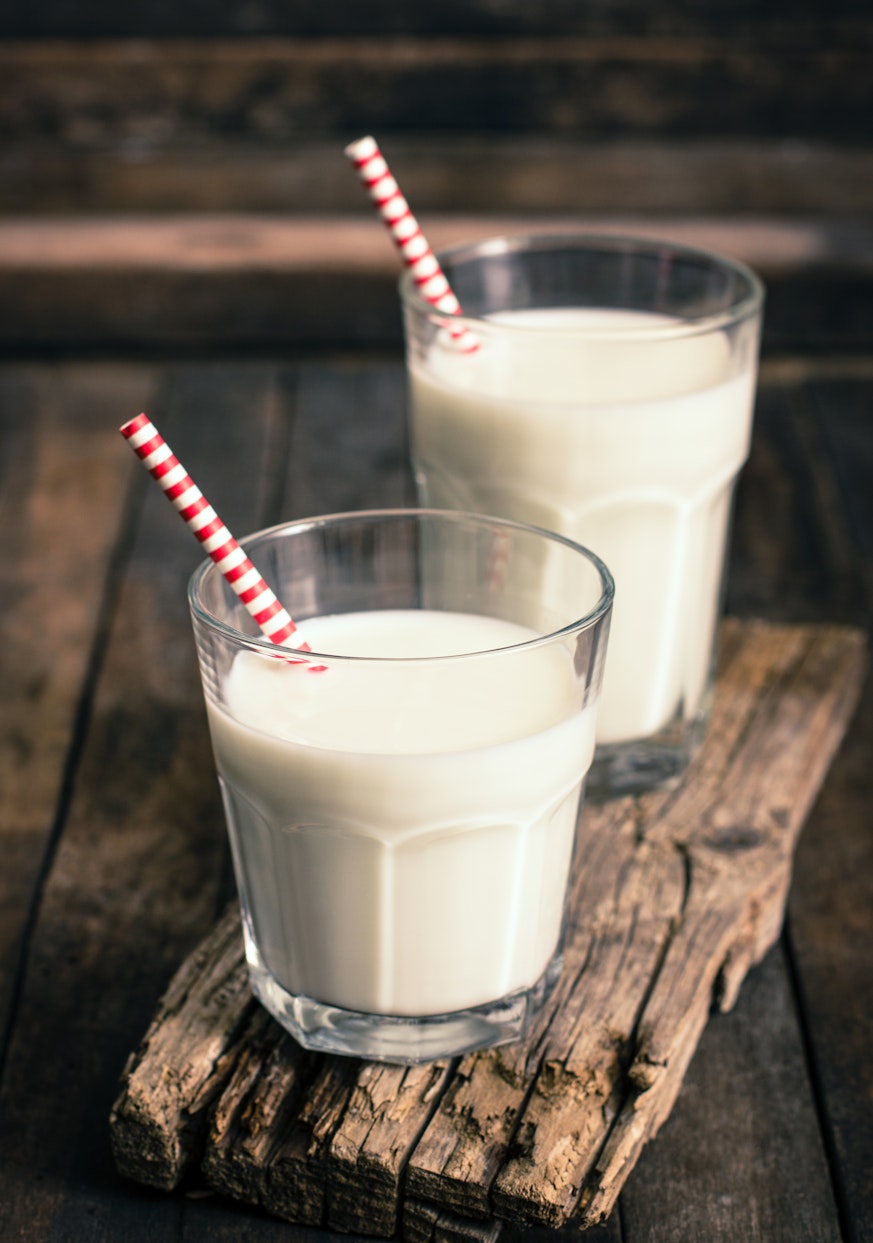
What is lactose intolerance?
Lactose intolerance is the body’s negative reaction to lactose - a kind of sugar found in milk and dairy products. It occurs when the body does not have enough lactase - the enzyme that breaks down lactose, and affects the digestive system.
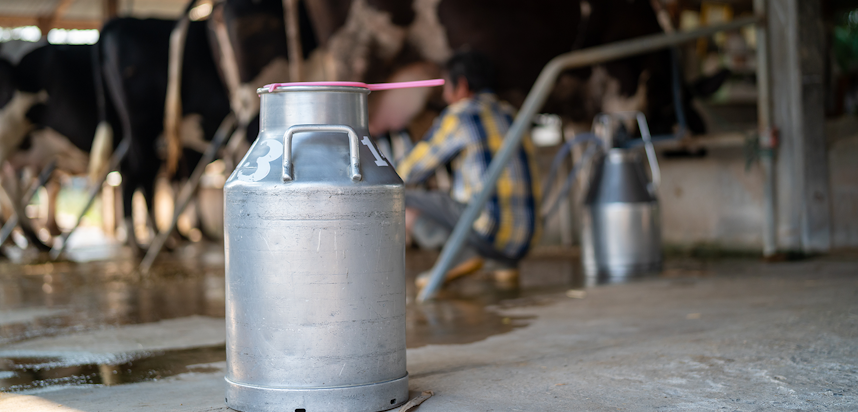
Is there a cure for lactose intolerance?
There is no real cure for lactose intolerance but some cases are naturally short-term and others last much longer.
Short term lactose intolerance can be caused by bacterial or viral tummy bugs like gastroenteritis and may last as little as a few days. Long-term lactose intolerance can be caused by anything from genes or an underlying health condition.
Those with a lactose intolerance commonly treat it by maintaining a dairy or lactose-free diet - however, depending on the severity of the intolerance some find that foods like milk and cheese can be consumed in small quantities without causing too much discomfort.
If a lactose or dairy-free diet is preferred, it’s important to make sure that the nutrients and vitamins found in milk are being included in the diet from other sources.
Foods that contain Milk
Milk can commonly be found in the following foods:
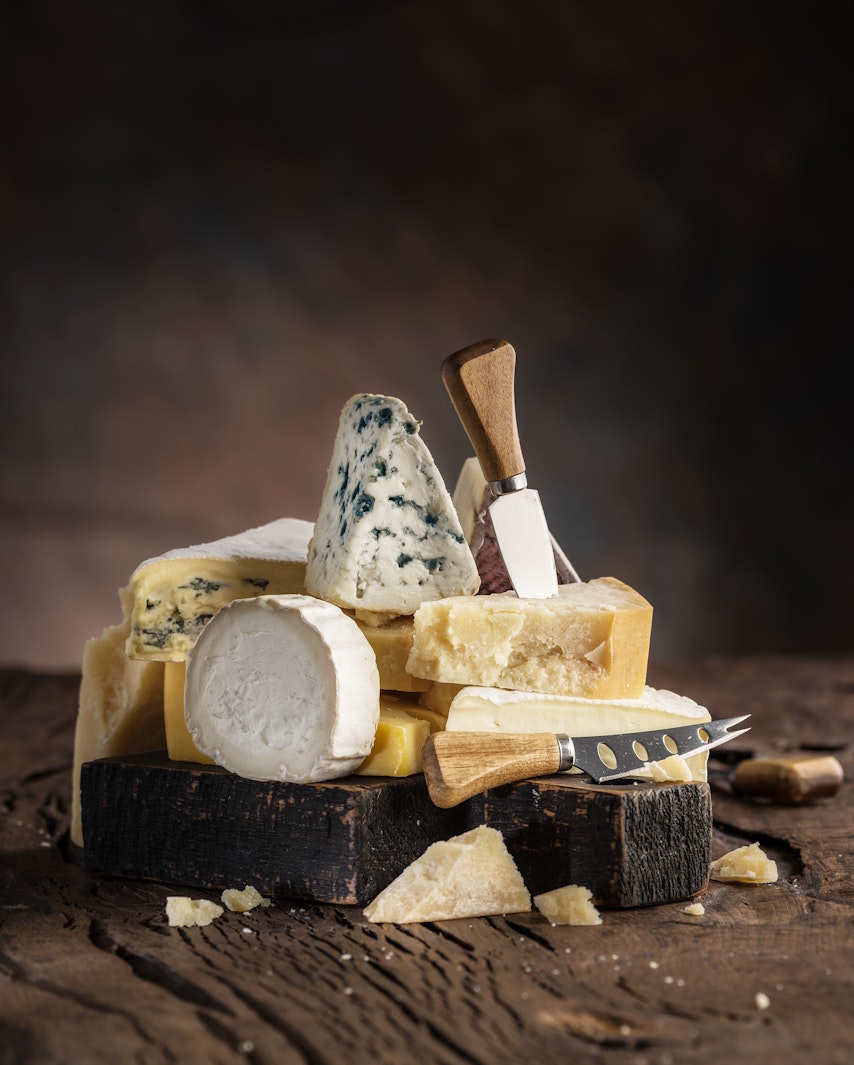
- Milk
- Butter
- Cheese
- Cream
- Milk powder
- Yoghurt
- Ice cream
- Custard
- Butter flavouring
- Ghee
- Chocolate
- Butter fat
- Butter oil
- Non-dairy spreads and margarine
- Buttermilk
- Whey
- Rennet
- Any food containing casein
- Powdered soup
- Powdered sauce
- Glazes on food
- Natural flavourings
- Caramel flavouring
- Instant mashed potatoes
- Ready meals
- Pasta sauce
- Protein powder
- Roux sauce
- Cereal
- Biscuits
Foods that contain lactose
Milk and foods made with milk contain lactose, though the level of lactose in these foods can vary and people with lactose intolerance might still be able to consume some of them.
Lactose can also sometimes be found in non-dairy products. These include:
- Mayonnaise
- Bread
- Baked goods
- Cake and pancake mix
- Processed meats
- Boiled sweets
- Salad dressing
Some medicines contain small amounts of lactose, but despite the name, lactic acid (mostly used in skincare) does not contain lactose and nor does sodium lactate (used in many toiletries).
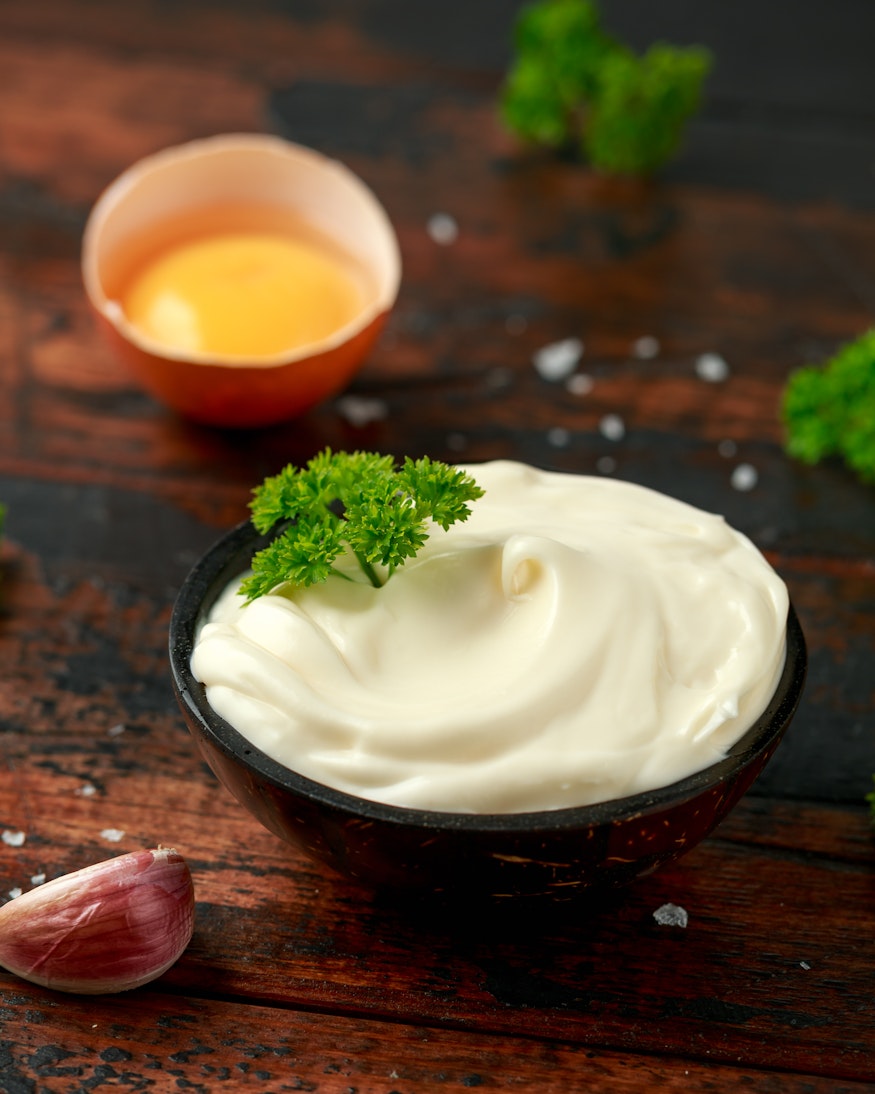
Surprising foods that contain Milk
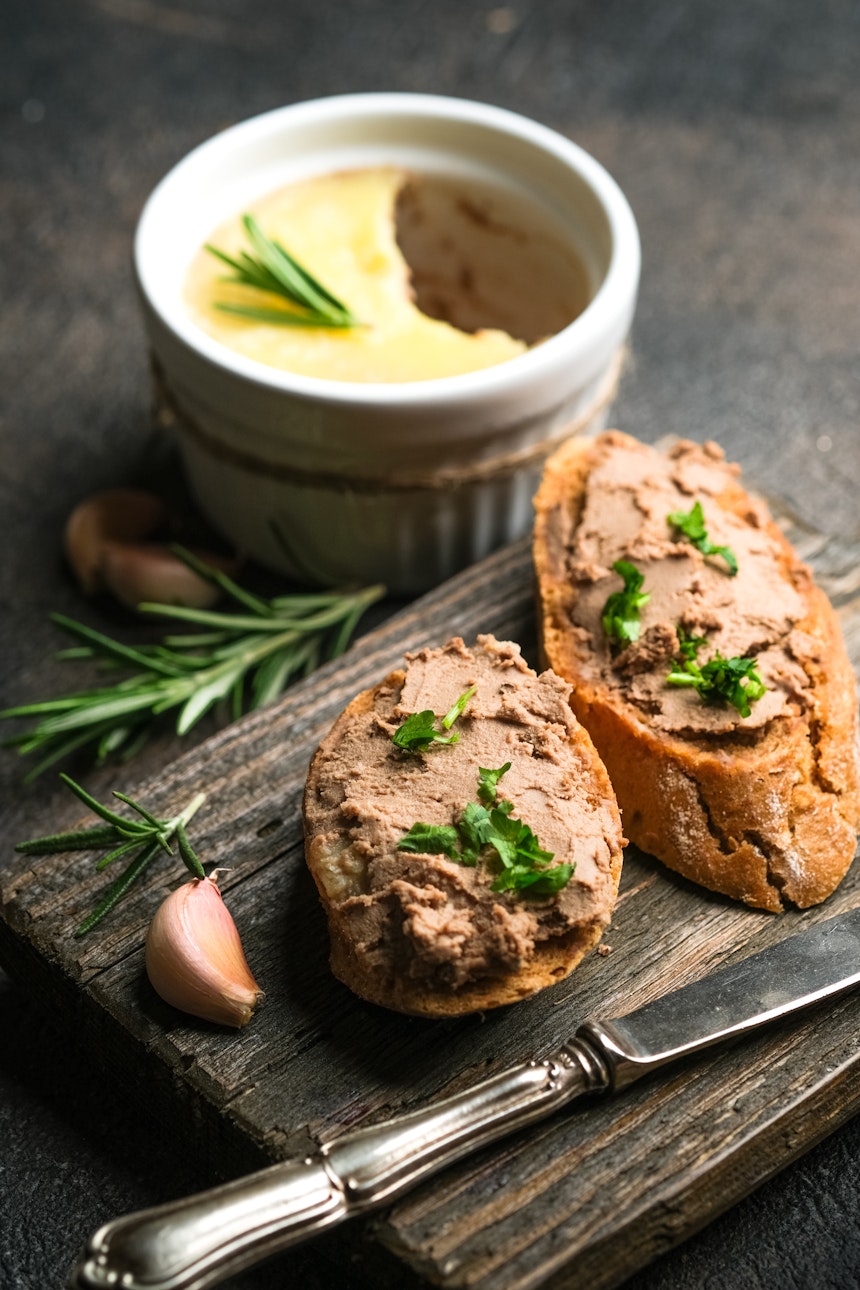
It might come as a surprise to find out that not all lactose-free or vegan products are safe for those with a milk allergy.
Most lactose-free milks have simply had the lactose enzyme removed and still contain the proteins that trigger an allergic reaction.
Many vegan products are safe for milk allergy sufferers but they can sometimes contain traces of dairy products and the label should always be carefully checked.
Additionally, milk or dairy products can be found in several foods you might not expect, such as the following:
- Canned tuna (casein)
- Crisps with non-natural flavourings
- Chewing gum
- Margarine
- Hot dogs
- Pâtés made from animal liver
Other names for Milk on labels
Milk is not always called milk on a label.
All of the following names refer to milk or dairy ingredients:
Milk — acidophilus milk, buttermilk, buttermilk blend, buttermilk solids, cultured milk, condensed milk, dried milk, dry milk solids (DMS), evaporated milk, fat‐free milk, fully cream milk powder, goat’s milk, lactose free milk, low fat milk, malted milk, milk derivative, milk powder, milk protein, milk solids, milk solid pastes, nonfat dry milk, nonfat milk, nonfat milk solids, pasteurised milk, powdered milk, sheep’s milk, skim milk, skim milk powder, sour milk, sour milk solids, sweet cream buttermilk powder, sweetened condensed milk, sweetened condensed skim milk,whole milk, 1% milk, 2% milk, Butter — artificial butter, artificial butter flavour, butter, butter extract, butter fat, butter flavoured oil, butter solids, dairy butter, natural butter, natural butter flavour, whipped butter, Casein & caseinates — ammonium caseinate, calcium caseinate, hydrolyzed casein, iron caseinate magnesium caseinate, potassium caseinate, sodium caseinate, zinc caseinate, lactalbumin, lactoalbumin phosphate, lactaglobulin, lactose, lactoferrin, lactulose
Cheese — cheese (all types), cheese flavor (artificial and natural), cheese food, cottage cheese, cream cheese, imitation cheese, vegetarian cheeses with casein
Other - Cream, Whipped cream, Curds, Custard, Dairy product solids, Galactose, Ghee, Half & Half Hydrolysates — Casein hydrolysate, Milk protein hydrolysate, Protein hydrolysate, Whey hydrolysate, Whey protein hydrolysate Ice cream, Ice milk, Sherbet, Casein, Whey, Lactoalbumin, Lactulose, Lactoferrin, Lactoglobulin, Milk protein, Hydrolysate, Lactalbumin, Lactalbumin phosphate, Lactate solids, Lactyc yeast, Lactitol monohydrate, Lactoglobulin, Lactose, Lactulose, Milk fat, anhydrous milk fat, Nisin preparation, Nougat, Pudding, Quark, Recaldent, Rennet, Rennet casein, Simplesse® (fat replacer), Sour cream, Sour cream solids, Imitation sour cream, Whey — acid whey, Cured whey, Delactosed whey, Demineralised whey, Hydrolyzed whey, Powdered whey, Reduced mineral whey, Sweet dairy whey, Whey, Whey protein, Whey protein concentrate, Whey powder, Whey solids, Yogurt (regular or frozen), Yogurt powder

Non-food products that may contain milk
Several non-food products can contain milk. These include:
- Chalk (via casein)
- Guitar picks (many new man-made picks are made from casein rather than tortoise shell)
- Leather polish (ingredients bound together with casein)
- Glue (casein-based)
- Gloves (milk protein used in fabric)
Milk Allergy Symptoms
Milk allergy symptoms can range from mild to severe. These include
- Wheezing and trouble breathing
- Shortness of breath
- Coughing
- Sore throat
- Throat tightness
- Stomachache
- Vomiting
- Diarrhea
- Eye discomfort (itching, watering, swelling)
- Hives
- A rash or red spots
- Swelling
- Drop in blood pressure
- Swelling of the lips and/or face
- Colic
- Hay fever-like symptoms – such as a runny or blocked nose
- Untreatable eczema
A milk allergy can also cause a severe allergic reaction such as anaphylaxis - if this occurs, 999 must be called immediately.
Lactose intolerance Symptoms
The symptoms of lactose intolerance can be similar to those of a milk allergy.
However, lactose intolerance symptoms are sometimes delayed and can manifest several hours after consuming lactose.
Lactose intolerance symptoms are mostly digestive and commonly include:
- Diarrhoea
- Stomach bloating
- Stomach aches or cramping
- Nausea
- Flatulence
The severity of these symptoms will depend on the level of intolerance and the amount of lactose consumed.
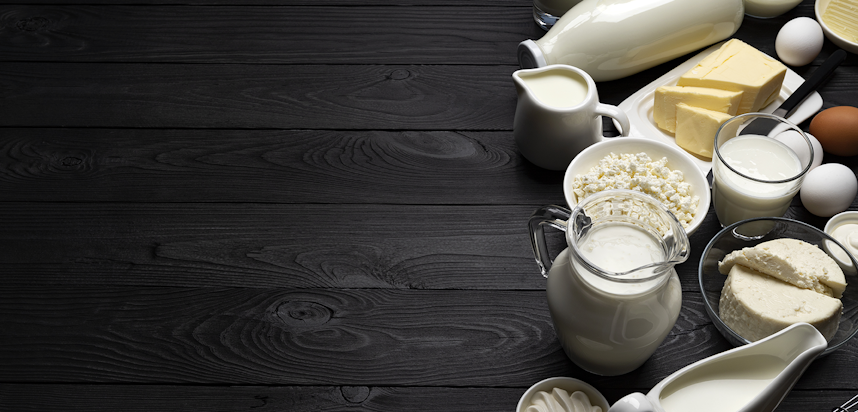
Milk Allergy Treatments
People with a milk allergy must avoid milk and all dairy products. This means checking labels carefully and monitoring the allergen content of everything they consume.
People who are allergic to any of the 14 major food allergens should also carry an AAI (Adrenaline Auto-injector) prescribed by their doctor in case they accidentally consume their allergen and go into anaphylaxis. Milk is one of the 14 major food allergens. It is also recommended that those with allergies carry antihistamines at all times too to reduce any potential swelling.
If an AAI is used in any circumstance, 999 and an ambulance must be called.
What are the best milk and dairy alternatives?
There are many milk alternatives on the market. These are predominantly plant-based.
Soy Milk
Probably the most popular non-dairy milk, in part because it is almost as high-protein as cow milk. Many soy milk brands have added calcium and vitamin D to further replace lost nutrients from consuming cow milk. Soy milk is seen as an attractive low-calorie option for those watching their weight.
Allergy alert: Soya is one of the 14 major food allergens.
Almond Milk
Almond milk is considered the most low-calorie milk alternative, made from ground almonds and water and is full of healthy, unsaturated fats. The only downside is that almond milk does not contain much protein.
Allergy alert: Nuts (Tree nuts) are one of the 14 major food allergens. Almonds are a tree nut.
Rice Milk
Rice milk is the most allergy-friendly milk alternative as it contains none of the 14 major food allergens. It has a less creamy texture than other milk alternatives, and though low in protein, it does contain the same amount of vitamin D and calcium as cow milk.
Coconut Milk
Coconut milk has cow milk’s creaminess, as well as a sweetness many people enjoy. It does contain the same amount of saturated fat as cow milk, but without having the same level of protein or calcium. It is, however, high in vitamin D and vitamin B-12.
Hemp Milk
Hemp milk is controversial because of its taste - some people find it unpleasant. However it is very nutritional, full of calcium and vitamin D - as well as omega-3. It is made from water and shelled hemp seeds.
Plant-based butter
Non-dairy butters are usually made by combining water with one or a combination of plant-based oils. These oils can include olive, coconut and avocado. They are similar to margarine - made from vegetable oil mixed with water, emulsifiers and salt.
Plant-based butter, also referred to as vegan butter, is a nondairy butter substitute that's typically made by combining water with a plant-derived oil, such as olive, avocado, coconut, palm kernel oil, or a combination of oils.
Vegan cheese
Vegan cheese does not have the best reputation but many brands are improving on the texture and taste of their offerings. It is made from foods such as soy, nuts and seeds.
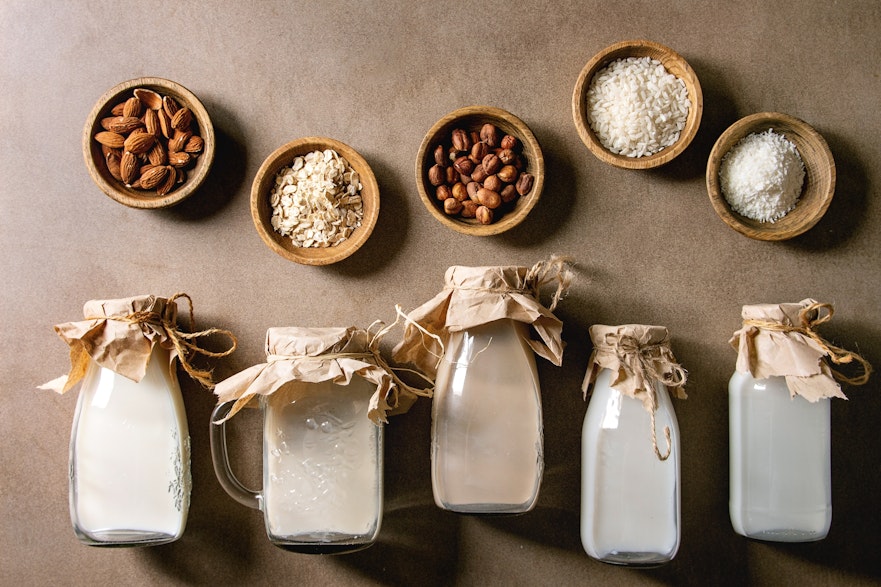
What is a milk replacement?
A milk replacement is generally the same as a milk substitute, though a milk replacement is usually fortified with the same vitamins and nutrients that milk contains so that it is a viable replacement.
Plant-based milks, vegan cheese, vegan butter and other vegan dairy-free products are all milk replacements, as are synthetic milk creamers.
What are the main food allergens?
Milk is one of the 14 major food allergens. The other major food allergens are
